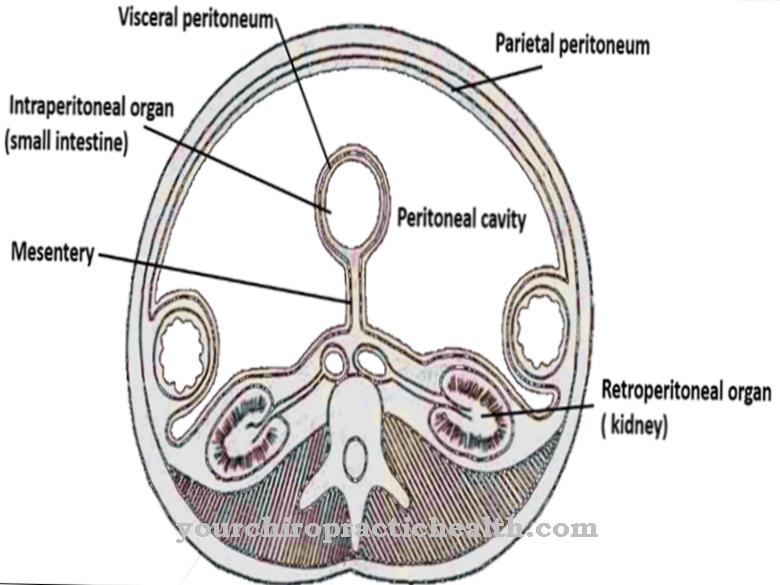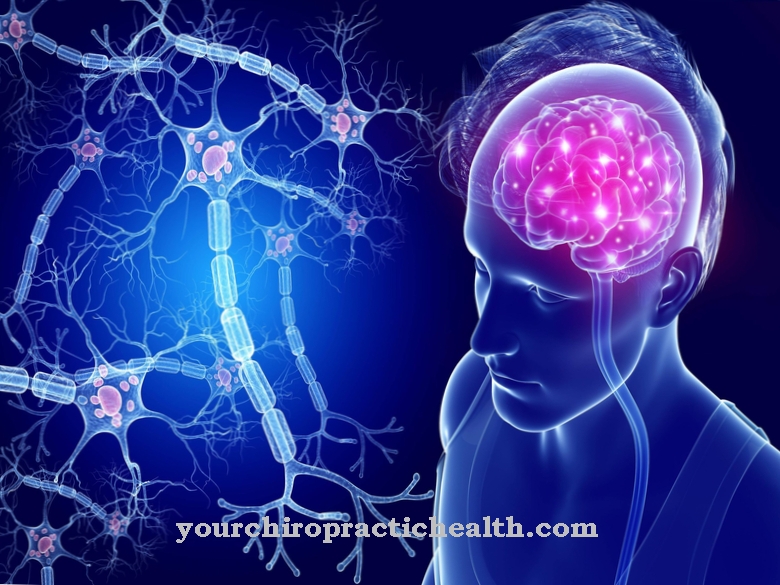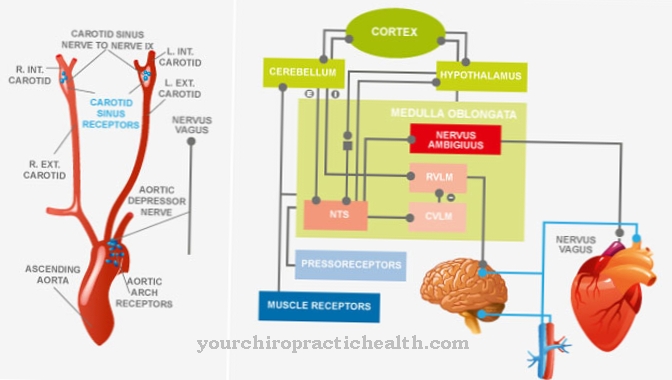Synapses are the connection points between nerve cells and sensory, muscle or gland cells or between two or more nerve cells. They are used to transmit signals and stimuli. The stimulus is usually transmitted chemically by means of neurotransmitters.
There are also synapses that transmit their action potential directly by electrical means, which makes the transmission of stimuli faster and is therefore an advantage for muscle reflexes, for example. In contrast to chemical synapses, electrical synapses can transmit stimuli in both directions.
What are synapses?
Synapses enable stimulus and signal transmission between nerve cells (neurons) and between nerve cells and sensory, muscle and gland cells. The name goes back to the British physiologist Sir Charles Sherrrington and derives from the ancient Greek "syn" for together and "haptein" for grip or grasp.
Depending on the type of stimulus transmission from the sender cell to the recipient cell, a distinction is made between chemical and electrical synapses. In chemical synapses, the electrical potential that the sending cell is supposed to transmit is converted into a chemical messenger substance (neurotransmitter) at the synapse membrane.
The narrow gap between the synapses of the sending cell and the receiving cell is overcome by the neurotransmitter and the former electrical action potential is translated back into one.
If the recipient cell is muscle or glandular cells, implemented into actions or, in the case of another neuron, passed on as an electrical action potential. This type of signal transmission has the advantage that it is a directional, unidirectional, information transmission. In contrast, electrical synapses can transmit stimuli in both directions, i.e. bidirectionally.
Anatomy & structure
A synapse always consists of a transmitting part or transmitter, the end button of an axon, which closes with the so-called presynaptic membrane. The opposite receptor part of the synapse, the terminal button of a dendrite, closes with the postsynaptic membrane.
The synaptic gap is located between the presynaptic and the postsynaptic membrane. It is very narrow and is 10 to 20 nm in chemical synapses. In electrical synapses, the gap only reaches values around 3.5 nm.
In humans, the number of synapses is estimated at the unimaginable value of around 100 trillion, corresponding to a 1 with 14 zeros. The presynaptic terminal knobs of the axons hold specific neurotransmitters ready in so-called vesicles.
To ensure energy, the terminal knobs contain numerous mitochondria and other organelles. When an action potential arrives, the vesicles empty the neurotransmitters into the synaptic gap in the course of exocytosis.
The receptor part of the synapse, the end button of a dendrite or an action cell (muscle or gland cell), contains special receptors in its membrane, to which the released messenger substance can dock, which leads to a reverse translation into an electrical action potential or to muscle contraction or nozzle secretion.
Function & tasks
Depending on their function, synapses can be divided into effector and sensor synapses as well as interneuronal synapses.
- Effector synapses establish the connection between neurons and muscle cells or neurons and gland cells.
- Excitatory effector synapses serve to give the muscle cells the command to contract or the gland cells to give the command to secrete.
- Inhibitory effector synapses in turn transmit the opposite information, namely for muscle relaxation and for cessation of glandular secretion.
- Sensor synapses have the task of receiving sensory signals from sensory cells and receptors such as photoreceptors in the retina, pain receptors (nociceptors), thermosensors, pressure and voltage sensors and many others, and forwarding them to the corresponding switching centers in the brain.
- Interneuronal synapsesthat form a cross connection between two or more neurons are found in huge numbers in the brain. There are a multitude of conceivable interconnection options, which practically all occur, each with different tasks.
For example, there are links between axons and dendrites, Axons and cell bodies (soma), between the dendritic plexuses of two neurons and direct connections between the cell bodies of two neurons.
Interneuronal synapses are used for complex information processing, e.g. B. within the autonomic nervous system, but also the processing of complex information into an overall picture in the central nervous system.
- Chemical synapses are each specialized in a particular neurotransmitter or hold this particular neurotransmitter in their vesicles. This is why chemical synapses can also be differentiated according to “their” neurotransmitters, such as adrenergic, cholinergic and dopaminergic synapses, corresponding to the neurotransmitters adrenaline, acetylcholine or dopamine.
- Electrical synapsesare used where the extreme speed of stimulus transmission is important, such as when triggering muscle reflexes.
You can find your medication here
➔ Medicines for painAilments & illnesses
In 2014, researchers in Baltimore demonstrated that certain gene mutations lead to impaired synapse formation, which can cause mental illnesses such as schizophrenia and severe depression.
It is much better known that poisons lead to disorders of the synapse functions with sometimes serious effects. The substances either block the release of the neurotransmitters into the synaptic gap or they are so similar to the neurotransmitters that they dock on the receptors of the postsynaptic membrane in their place.
In both cases the function of the synapses is significantly or completely disturbed and blocked. An example of the blockade of exocytosis on the presynaptic membrane is the botulinum toxin synthesized by clostridial bacteria.
The neurotoxin, which is also known as botox, has a paralyzing effect on the muscles - similar to the tetanus toxin - because the effector synapses can no longer transmit a contraction stimulus to the muscle fibers. In severe cases, this can lead to respiratory paralysis and death.
Many spider, insect and jellyfish poisons as well as poisons from various mushrooms are synapse poisons. Drugs such as alcohol, nicotine, hallucinogens such as LSD and psychotropic drugs are synapse poisons with different effects.
























.jpg)



